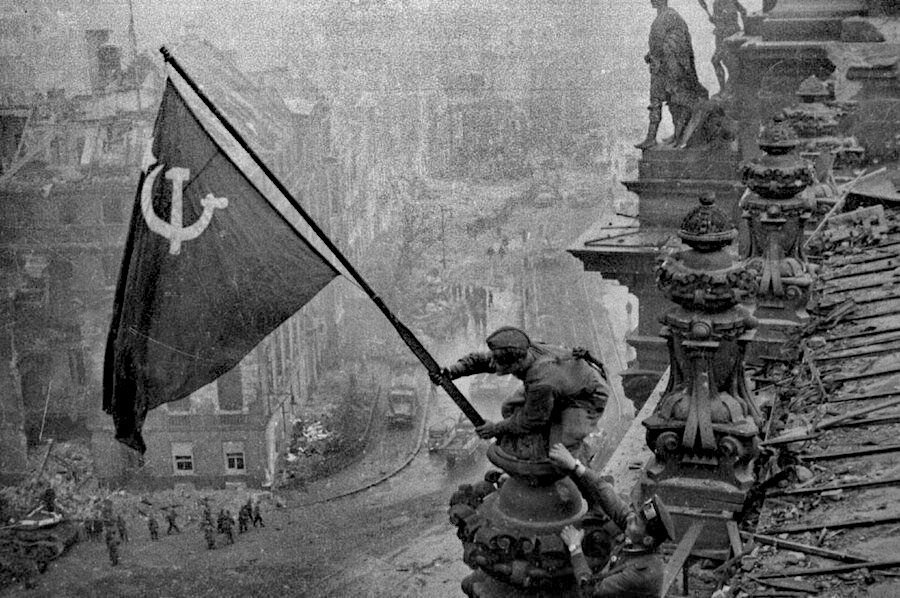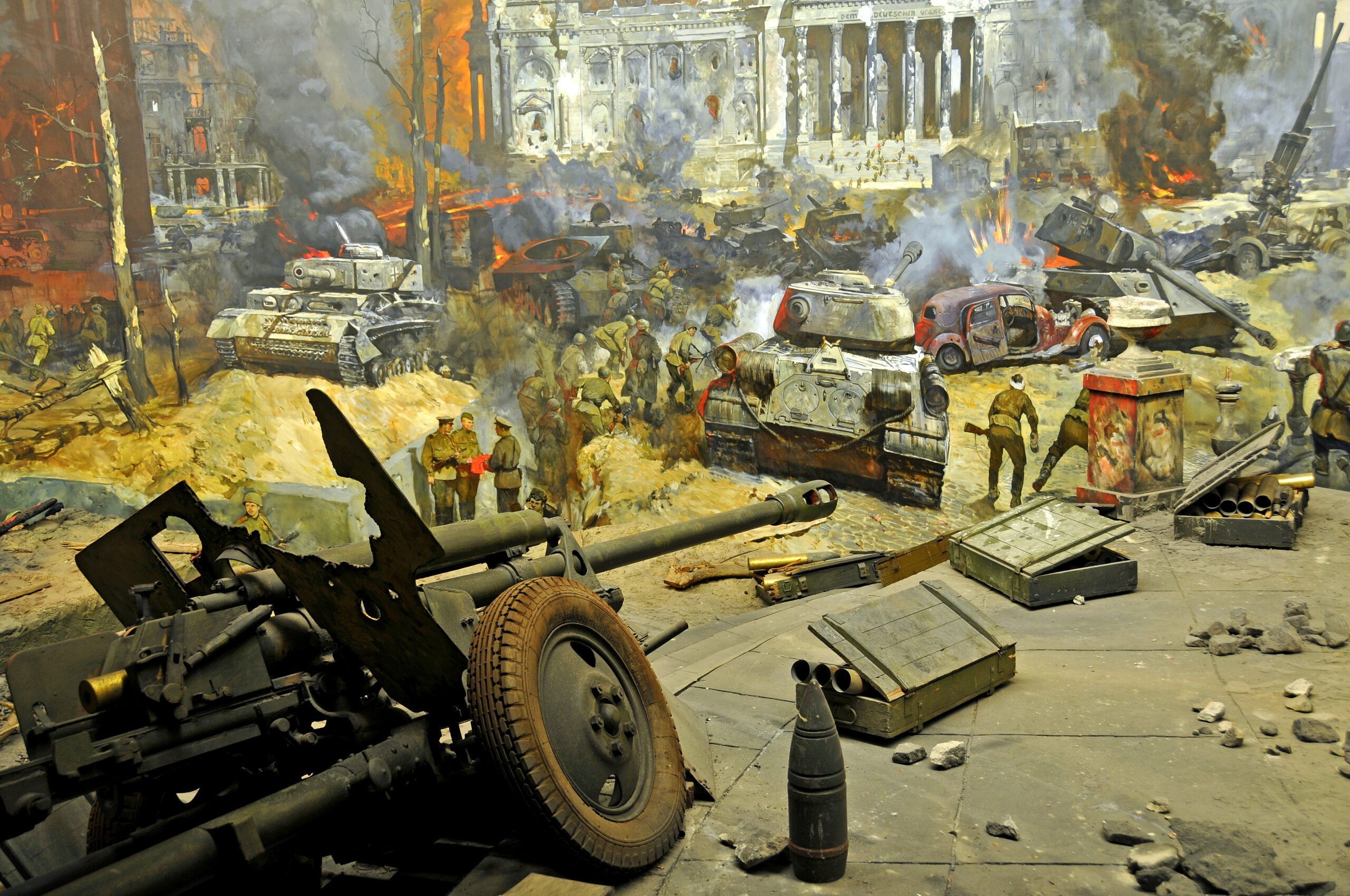Hearts of Iron
From the beginning of the Soviet Union’s final World War II offensive on Berlin, known as the Battle of Berlin, which kicked off on April 16, 1945, the situation on the Eastern Front had deteriorated rapidly for the Germans. By April 22, Soviet tank-corps spearheads were already starting to surround the German capital from the north and the south. With the encirclement of Berlin soon at hand, German High Command from the bunkers under the city centre were calling for immediate assistance.
The 12th Army under General of the Panzertruppe Walther Wenck had just retreated east of the Elbe at this point, fighting a losing battle against the American advance from the west. Now beyond the river, they could make a stand while providing a tactical reserve against that advance. But the Führer’s orders changed their enemies. Wenck’s 12th was ordered to strike to the east, into the Soviet flanks, and to relieve Berlin.
However, what was called an Army, a Corps, or even a Detachment this late in the war was often nothing more than a mixed group of veterans, stragglers, wounded and conscripted youngsters, and middle aged and even old men. Wenck’s 12th had a large group of children from the Hitler youth, young men who hadn’t yet finished school, and they were now tasked to take on Russian tanks.
According to Generalfeldmarschall Wilhelm Keitel, they were to unite with additional Panzerkorps – tank Corps – under General Felix Steiner to the north, while the trapped 9th army would make a break to the west and join them. Together, they were to relieve the capital from the Soviets, who had over a million men advancing.
“His destiny is Germany’s destiny”
It was a plan, at least, but one that only existed on paper. Wenck’s Army had only been recently reorganised with men from all branches that could still fight – that was the only requirement. But even this late in the war, the German army was still able and reliable, and they still had fight in them, even in a futile battle. The army’s diaries of this day read: “No deserters, no prisoners, no missing.” The 12th Army was heading to Berlin. They had only a few vehicles and tanks, mostly mobile assault guns, and little fuel, so the men had to make the 150km to Berlin on foot.

By the April 25, they had reached the outskirts of Berlin, but the situation had worsened dramatically. The Soviets were already south of Potsdam and east of Brandenburg an der Havel, west of Berlin. The surrounding of the capital was nearly complete, and the Soviet forces were much stronger than anticipated. While examining his maps, General Wenck hesitated. Was relieving Berlin even possible at this point? In talks with Keitel, though, the orders from the bunkers under Berlin were clear: “Get the Führer out. His destiny is Germany’s destiny. Only you, Wenck, only you have the power to save Germany now.”
So Wenck got to work. The only chance to relieve Berlin at this stage was to split his troops towards the north and the south, and relieve as many of the defending German forces around Berlin as possible, so they could make up a small reserve for an attack towards Berlin itself. This would maybe destroy enough Soviet forces, or just hold them back enough to give Berlin some breathing space and for civilian refugees to escape the city. But even that would only be temporary.
But Keitel rejected this plan. Berlin itself had highest priority. A push towards the Führer must be done immediately and that’s it. Well, Wenck knew that this would quickly be the suicide of his army, and he realised that High Command had totally lost touch with the situation and reality of the war. Steiner’s tanks in the north were already being pushed back and the 9th was fighting for its life. In this situation, Wenck chose not to follow the direct orders from the Führer himself, instead “he had to follow the guideline of his own conscience.”
Saving Berlin was impossible. The only thing his army could potentially achieve was getting as many people away from the Soviet advance as possible. By attacking towards Potsdam, he would relieve the encircled garrison there, and by creating a corridor from there towards Berlin, they would be able to let refugees flee the city. An attack to the south would give the 9th army a chance to join their lines. Wenck called this his ‘Rettungswerk’ – his rescue mission. Only on this would he gamble the lives of his young soldiers.
In the early morning hours of April 26, the final German offensive of the war began. Elements of the 12th army made their way northeast. Key to their advance was the Infantry Division ‘Hutten’, made up of hardcore veterans who had recaptured the Wittenberg from the Soviets just days before and held off overwhelming forces for days. Now, they were the wedge that drove into the Soviet positions with artillery and tank-hunters.
Caught off guard
The Soviets were totally caught off guard by the attack, and by midday, the 12th army had advanced 18 km towards the city of Beelitz. On Hutten’s flank were the elite Scharnhorst grenadiers, who pushed down the Autobahn through the night, throwing themselves against the tenacious Soviet defence. House to house fighting against superior Soviet heavy tanks was vicious and costly, and they often had to resort to close range attacks with Panzerfausts – single shot anti-tank guns. They went days without sleep or sufficient food, while the Soviets were constantly reinforced, but despite heavy casualties, they made progress towards Berlin.

By May 1, the 9th Army had managed to use the momentum of the 12th and break out of their encirclement. Spirits rose as the exhausted soldiers of the 9th and the hundreds of civilians with them joined the 12th, but seeing the ragged and wounded men limping into his ranks, Wenck was astonished at Hitler’s insane plans to fight the Soviets head on. The 9th had been nearly destroyed just fighting for its survival and the survival of the many civilians in its midst.
Other fighting forces were able to link up with Wenck as well, and the same day Hutten reached a large German military hospital near Potsdam. Once more, the fighting was brutal as they stormed the Soviet trenches, but for 24 hours they were able to get many hundreds of wounded soldiers, nurses and Red Cross personnel out before the Soviets returned.
This was the very end of the European part of the war, and it is difficult to find and follow the reports from the last days of the fighting around Berlin. The Germans did not make many records, the Americans also often didn’t record a lot of it, and the Soviet archives are still not fully available. Neither Steiner nor Wenck reached Berlin, though, and Hitler chose suicide over capture in his bunker.
On May 2, Wenck’s Army retreated. It would protect the refugees and bring them across the Elbe and into American custody. Day and night they marched, avoiding contact with the enemy from the east for as long as possible. Soviet pursuit was initially weak, though, as they were concentrating on taking Berlin.
The surrender proposal
On May 3, Wenck made contact with American General William Simpson of the 102nd US Infantry Division of the 9th US Army near Tangermünde. Now, the Allies had agreed among themselves that either the German Army would capitulate as a whole, or that small groups could capitulate to them individually via their commanding officers, but there was a hitch. This partial capitulation could only happen to the opponent they’re actually engaged with, which for Wenck, was the Soviets. To surrender to the Americans, Wenck technically would have to attack them and then surrender.
Well, the Americans simply kept silent in regard to the surrender proposal. They did not fire on the advancing Germans either – in violation of the Allied contract. Still, General Simpson let the wounded cross the river, but only with just enough medical supplies for them. Same with Wenck’s soldiers and their personal provisions, but he would not allow civilians to cross. Men were even sent out with whips on the partially collapsed bridge to hold back civilians trying to cross with the soldiers. It could’ve been more of a human tragedy were it not for sudden Soviet fire that rocked the remnants of the bridge. This killed several American soldiers so a 2 km retreat from the river was ordered, allowing civilians to cross the river.
Wenck’s army soon had to fight the Soviets, though, who had renewed their attacks once they realised what was going on. With each break in the lines, Wenck had to order young men to their deaths to recapture and hold positions for just an hour or two so that others could live. It was a final act of self-sacrifice in a war that was essentially over.
As the last German grenades were shot, the last artillery pieces and the last tanks were blown up, and then the last German soldiers – among them General Walther Wenck himself – crossed the river and entered American captivity. In the end, thousands of soldiers, civilians, nurses, women, children and the elderly were saved from the fall of Berlin.
On May 8, as the very end came, many men and women attached to the 9th Army were extradited back to the Soviets. To this day, the exact reasons for that are unknown, though it is known that there were several suicides to escape that fate.
The Battle of Berlin inspired us to write ‘Hearts of Iron‘, which is featured on our album, Heroes. Take a look at the lyrics we wrote here.
If you prefer a visual interpretation of this story, watch our Sabaton History episode, Hearts of Iron – The Battle of Berlin:





















